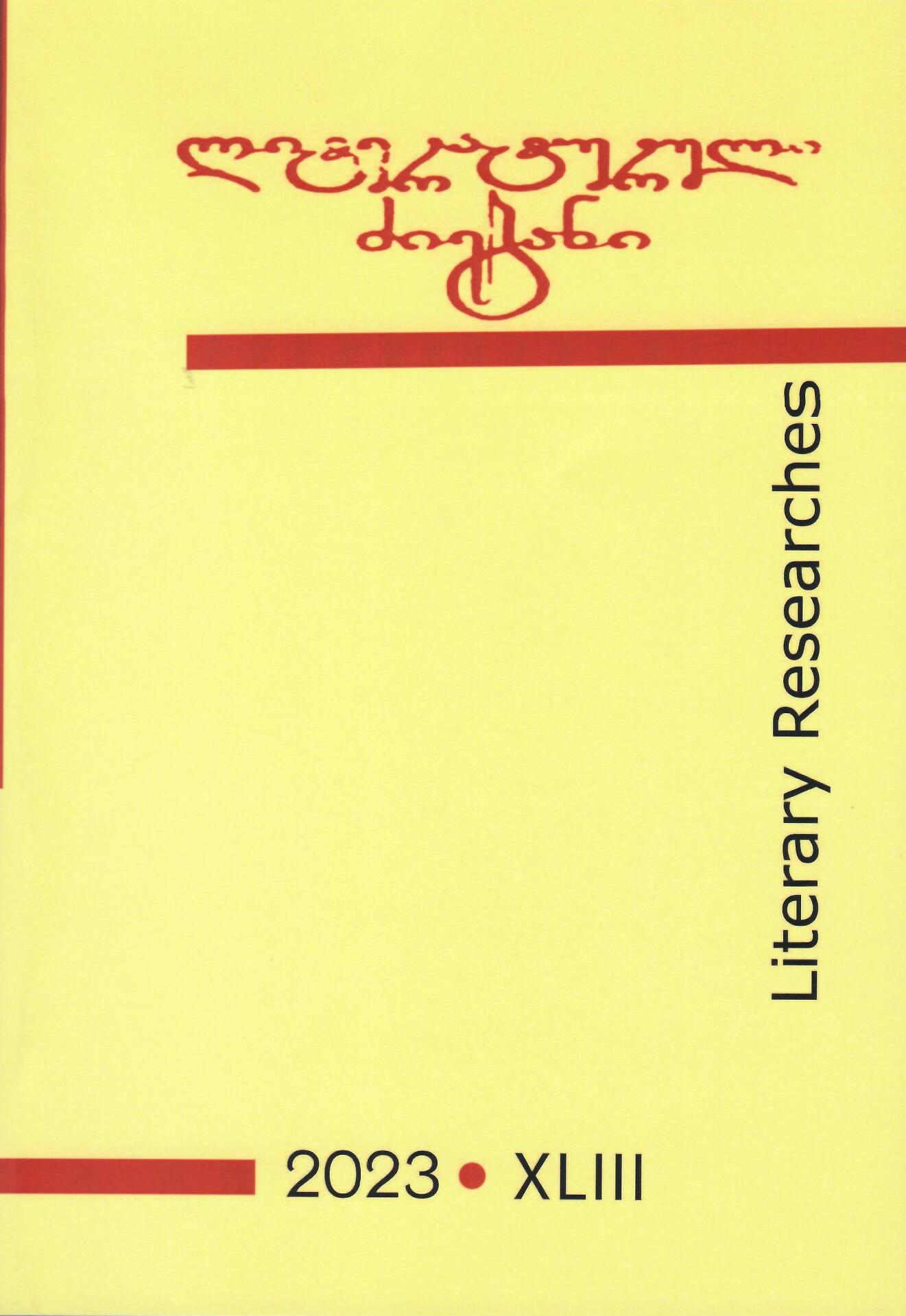Published 2023-12-14
Keywords
- Guram Gegeshidze’s novel Natliskroba,
- the concept “saga”,
- reality of 20th-century Georgia,
- the tragedy of March 1956
How to Cite
Abstract
This paper focuses on Guram Gegeshidze’s novel Natliskroba one of four novels in the writer’s cycle published under the general title The Woes of Kartli. As stated in the study, Guram Gegeshidze’s prose exhibits the elements of “magical realism” and late modernism. At the same time, neorealist tendencies are also apparent in his works. For the prose writer, new realism became a reliable alternative to socialist realism.
Literary critics point out that Guram Gegeshidze chose the saga genre for the novels of the cycle The Woes of Kartli which was a novelty in Georgian prose. Through the application of this literary innovation he could artistically reflect and re-evaluate the contradictory developments that Georgia underwent in the twentieth century. The author of the work discusses the history of the establishment of the concept “saga”. It is indicated that this term includes medieval Scandinavian and Irish epic works. It is noted that there are also Icelandic sagas, translated sagas, sagas about kings, knights, bishops, etc. Modern literary criticism under the concept of family saga considers the chronicles of the origin, development or disintegration of a large family, against the background of current political developments in the world or in a particular country.
The Natliskroba depicts distinct periods of the historical reality of 20th-century Georgia: a broad overview of the tragic events of March 1956 is presented in the main section of the novel, and the episodes that follow end up with the 1990s civil war. According to Giorgi Lobzhanidze, the title itself Natliskroba is saying a great deal, “it is a title containing substantive and emotional contexts”. It means the weakening and disappearance of the national spirit.
In the novel, Gegeshidze devotes a lot of space to analyzing and evaluating the events of March 1956. It is known that demonstrations in connection with Stalin’s cult had started in Tbilisi and other towns since March 3, 1956. On the night of March 9, the Soviet army attacked the protesters, and many civilians were killed in this brutal confrontation. Several conceptual literary texts were dedicated to the tragedy of March 1956: one of the first is Otar Chkheidze’s novel Revelation, which was written in 1973 and published in 1989. Guram Gegeshidze’s Revelation came out in 2016 (in the same year Levan Khaindrava’s novel The Sixth Hour translated into Georgian and others were published.
Guram Gegeshidze processed a great deal of factual material in his novel. As a firsthand witness to the events, the author’s analytical understanding of all historical peripetia of his tragic century gives additional historical authenticity to the text. He portrays his contemporaries’ bitter experiences in an artistic manner, blending them naturally with historical challenges the country faces.
Guram Gegeshidze offers a critical evaluation of the harsh, depressing reality of the post-Stalin era. A prose writer is an artistic chronicler of his hard times. He tries truthfully and objectively present his contemporaneity, thereby helping the future generations in correct perceiving and appraising of the historical events of the 20th-century Georgia.

